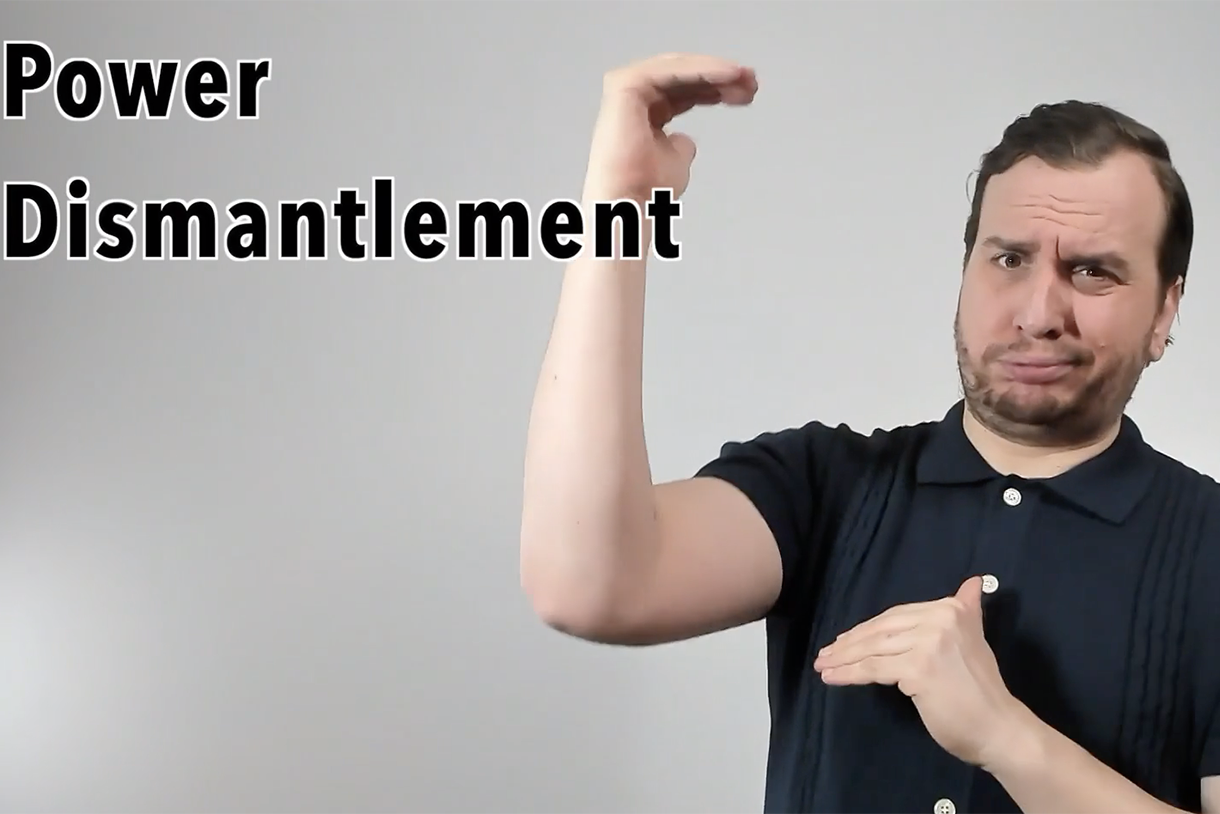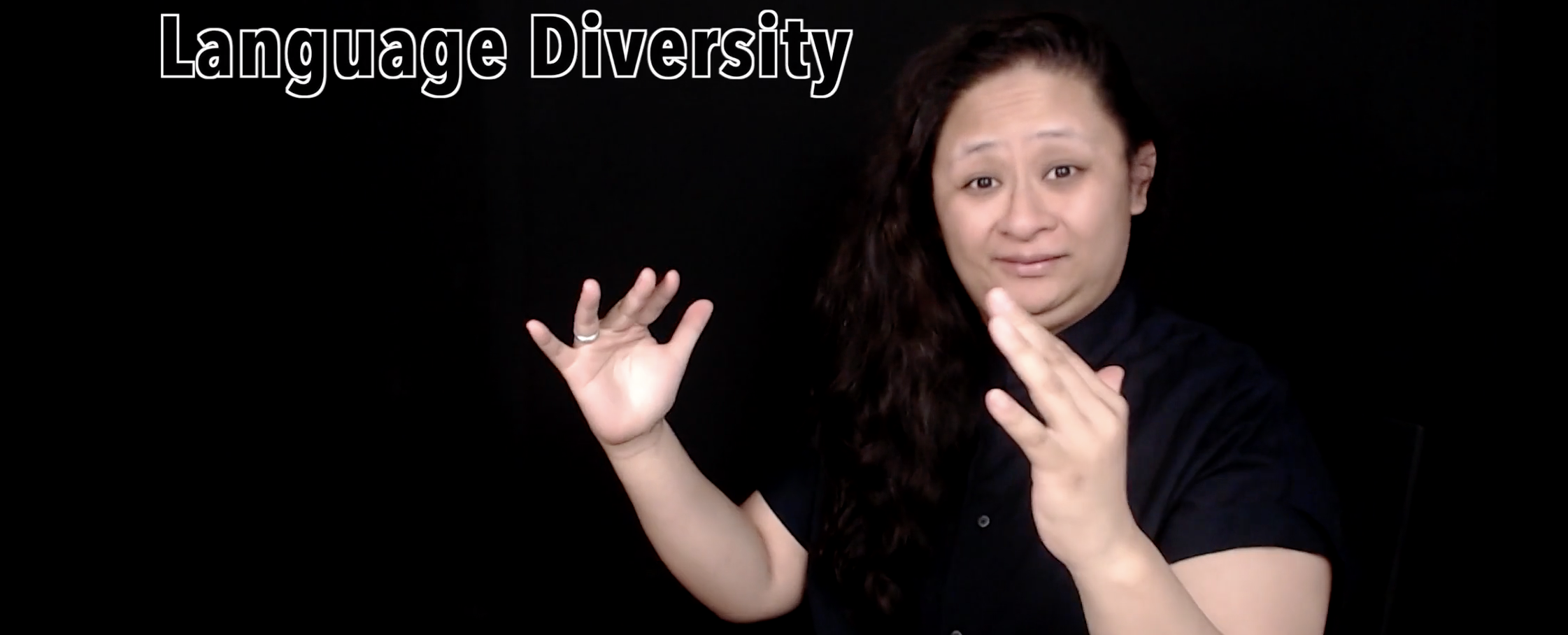How the ASL Department Tackled Teaching COVID-19
 Photo Credit: ASL Department
Photo Credit: ASL DepartmentThis year, American Sign Language has been in the spotlight due to the COVID-19 pandemic. There are sign language interpreters next to every government official while they give pandemic related news conferences. Interpreting isn’t a volunteer position; this is a profession that helps provide information to an entire community. While the pandemic has caused changes in how government officials relay information, it’s also caused changes in how Columbia’s American Sign Language department has been able to teach courses over the past year.
When the COVID-19 pandemic caused classes to go remote, Assistant Professor Matthew Andersen knew that he would be able to teach ASL remotely, but that it would be a challenge. Teaching ASL remotely required creating new lessons, videos, homework and other materials to ensure students learned at the same rate as they would in a classroom. There’s also an increased expectation that students need to take ownership over their learning experience during this time.
The modality of ASL heavily depends on 3D space and it impose a challenge for teaching this language through 2d environment. for example, Zoom is a 2D space which gives everyone a one-third profile view profile view to show what the signs look like. Andersen has had to accommodate for the loss of that other dimension while teaching. The challenge doesn’t end here, the department also places practicum students in internships. Practicum students are required to have 90 hours of interpreting time, and in the past, they would have met with mentors and shadow them in a workplace. However due to COVID-19 many businesses have kept their employees remote. This has required students to do more in-house work at Columbia, such as students interpreting lectures while their mentor reviews. The ASL Department appreciates the cross departments support by providing lecture type courses under the School of Liberal Ats and Science.

While COVID-19 has provided several challenges for the ASL department, the department has also been able to learn through this challenging time. While practicum students need a mentor, through Zoom this semester students have been able to find mentors all over the United States. Additionally, the department has been able to expose students to the language through virtual social and panel events, and practicum faculty have been working closely with the Deaf community for greater opportunities for practicum students.
Columbia College Chicago’s American Sign Language program is one of sixteen accredited colleges that offer BA degrees in ASL-English Interpretation. There are two majors, ASL-English Interpretation (BA) and Deaf Studies (BA). The ASL-English Interpretation program is a four-year, full-time program that prepares students to earn a national certification in the field of interpreting. ASL-English Interpretation is a customer driven program, which strives to broaden students’ expertise of interpreting in areas including education, theatrical work, and general interpreting. The Deaf Studies BA prepares students to be an advocate for and with the Deaf community.
Since the COVID-19 pandemic and social justice’s awareness sparked by the Black Lives Matter movement, ASL and Interpreting curriculum will be revised. Columbia’s interpreting faculty worked hard to update cultural and language diversity within the program. Starting the in the next academic year, students will begin to see course updates offered in the ASL-English Interpretation program. “We want the model to illustrate the language. So, we took a step back and thought about what the specific language needs for each person would be and how we can broaden the student's understanding of that and match anybody's needs,” said ASL Chair Peter Cook. As more high schools begin to offer American Sign Language courses, Columbia’s ASL department is committed to advancing Columbia’s ASL skill-based courses to ensure ASL-English Interpretation remains a relevant and forefront program. One of the ways the department is implementing these adjustments is through the American Council on the Teaching of Foreign Languages, which is responsible for maintaining a standard of language and learning of language in the US.
The new topic course offering, Sign Language, Culture and Power, will teach students about the language – it’s origins, ideology, and differences in the language. The upcoming changes will also recognize and address issues within the ASL community. For example, teaching students to recognize different dialects and modify strong binary signs to be more diverse and inclusive.
Once students within the ASL department graduate, they’re able to take a certification test to receive a license in Illinois which allows them to perform different types of work. Throughout their careers, students will need to take professional development workshops to support their learning. “When our graduating students receive their certificates, they need to meet specific hours each year to maintain their certificates. They can also advance their interpreting skills by focusing on their professional development in areas of medical, legal, or even entertainment,” said Cook.
MEDIA INQUIRIES
Sarah Borchardt
Communications Manager
sborchardt@colum.edu
Recent News
- AAA Alum Patrick Tumulty on Pivoting to Chase the Dream
- Faculty, Alum on Her Full Circle Experience at Columbia College Chicago
- Yulia Yrkoski on Illustration and Staying True to Yourself
- Audio Engineering Student Kimberly Liwanag on Living the Journey
- Ksenia Rychtycka ’93 Publishes Poetry Chapbook, "A Sky Full of Wings"